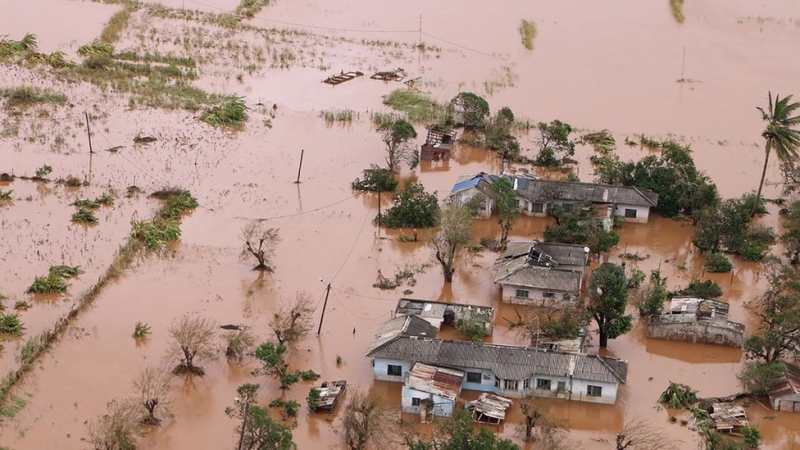The events of this year are yet another sign of how global warming can lead to exponentially worse natural disasters

By many measures, 2020 has been disastrous. From floods, landslides, locust swarms, earthquakes, and worst of all Covid-19 have kept everyone on the edge waiting for what is to come next.
Officially known to have started in October of 2019 a worst-ever bushfire in Australia burnt 2600 sq kilometres (roughly the size of Syria), killed at least 400 people (directly or indirectly), destroyed thousands of homes, and exposed 11.3 million Australians to the hazardous smoke haze – following on from its hottest year on record which had left soil and grass exceptionally dry. But next to the loss of human life and property, the most emotionally impactful statistic is that over 1 billion animals were incinerated by the fires, according to ecologist Chris Dickman of the University of Sydney. The Black Summer- as it is called - the Australian bushfires pumped about 434 million tonnes of carbon dioxide into the atmosphere. The economic loss was pegged at US $1.3 billion. California and Oregon saw their hottest September on record. Five of the top six largest wildfires on record in California (since 1932) burned more than 16,000 sq kilometres between August and September. What may have started as a small fire managed to engulf 51 hectares of forest land in Uttarakhand, resulting in 2 deaths and severe damage to flora and fauna.
Heavy rains in the early hours of New Year’s Day, triggered floods and landslides forcing over 14,000 people to flee their homes in the Indonesian province of South Sulawesi. Continuous precipitation totalling 15 inches caused Ciliwung and Cisadane rivers to overflow and inundated Jakarta and its neighbouring areas entirely. The floods were responsible for displacing a population of over 4 lakh, causing 66 deaths, landslides, and tonnes of destruction. Floods and landslides are frequent in Indonesia particularly during the rainy season, but the situation has become worse by the cutting down of forests. Severe floods affected 760,000 people in West and Central Africa, and at least 111 people were killed. Rains have been a boon and bane around different parts of India. Many parts of Assam experienced these heavy rains and as a result, 128 villages, 5 districts were inundated. On the other hand, 42.6 per cent of the US was in drought, which expanded /intensified across much of the Northeast and the western half of the contiguous US.
The first Coronavirus case was identified in Wuhan province of China in December 2019. Because it was not considered deadly at the moment, no one could imagine the kind of impact this virus would have globally. China recorded the first death on 11th January 2020 and subsequently two months later, WHO declared the virus to be a pandemic on 11th March. By April, the number of cases surpassed a million world over. The human death count crossed 1.6 million to date. The swift and massive shock of the coronavirus pandemic and shutdown measures to arrest its spread has plunged the global economy into a severe contraction. According to World Bank forecasts, this will be the deepest recession since the Second World War, where the global economy will shrink by 5.2% this year. The depth of the crisis has driven 70 to 100 million people into extreme poverty. Economists have been struggling to measure the impact of the crisis, which is likely to leave long-lasting scars and pose major global challenges.
The US Geological Survey recorded 45 major earthquakes that have been categorized over 6 degrees on the Richter scale. Jamaica and Russia faced earthquakes with a reading of over 7 magnitudes and were symbolically the worst-hit countries. An earthquake in Turkey was responsible for 41 deaths. One of the worst pest attacks on crops in almost 26 years, Swarms of desert Locusts were seen in Asia, East Africa, India, and the Middle East. The increase in temperature made it possible for breeding to happen while also making it habitable. In India, locusts swarming were observed in the states of Gujarat, Haryana, Madhya Pradesh, Punjab, Rajasthan, and Uttar Pradesh. Locusts are migratory pests that can eat as much food is as the amount 35,000 people can eat. They feed on crops and have the power to destroy crops within seconds. Moreover, they breed rapidly and almost 150 million of these pests can exist in a 1 square kilometer area.
A total of 136 tropical cyclones were formed in the global oceans. Yasa was the strongest storm of the year, which peaked with a pressure of 899 hPa and with 10-minute sustained winds of 250 km per hour.
In summary, the events of this year are yet another sign of how global warming can lead to exponentially worse natural disasters. If we do not control the unabated burning of fossil fuels now, it means there is no point in the future at which it becomes pointless or hopeless to take action. From here forward, all measures that we take are important.
(The writer is a scientist and researches global climate change issues. He lives in Taleigao)